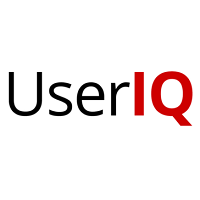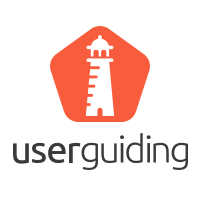What Are The Recent Trends In Digital Adoption Platform?
Businesses have been using digital adoption platforms (DAPs) more and more in recent years as they try to stay up with the quick speed of digital transformation. These platforms are made to assist businesses in efficiently integrating, educating, and assisting staff members and clients in utilizing new digital tools and technology. The trends that influence the creation and advancement of these platforms are growing along with the demand for DAPs.
The following are the main current DAP trends that all buyers need to be aware of:
1. Personalization And Customization: The move toward experiences that are more tailored to each individual is one of the primary themes in DAPs. Instead of using a one-size-fits-all strategy, DAPs are providing customized onboarding and training according to the requirements and preferences of each user. This makes it possible for the adoption process to be more focused and effective, which raises user engagement and happiness.
2. Machine Learning (ML) And Artificial Intelligence (AI): These technologies have been included into DAPs to improve user experience and offer more intelligent adoption recommendations and insights. By analyzing user behavior, these systems can recommend the most appropriate and useful support or training items. Users benefit from a more streamlined and customized adoption experience as a result.
3. Mobile-First And Remote-Friendly: DAPs are become more mobile-friendly and accessible from anywhere as remote work becomes more common. A mobile-first strategy has become a top priority for DAPs due to the proliferation of mobile devices and the requirement for remote training and support. Higher adoption rates result from ensuring that staff members and clients may conveniently access DAPs from the devices of their choice.
4. Integration With Other Enterprise Systems: Integration with other enterprise systems, including learning management, customer relationship management platforms, and human resources, is another development in DAPs. This makes it possible for data to flow smoothly and to see user uptake and performance holistically. Additionally, it allows businesses to integrate DAPs into their current processes and systems, integrating adoption into day-to-day operations.
5. Gamification: Gamification is the application of game mechanics and design concepts to non-gaming contexts, such onboarding and staff training. Points, leaderboards, and incentives are examples of gamification components that DAPs are using to make the adoption process more interesting and inspiring. In addition to increasing user engagement, this encourages user cooperation and competitiveness.
Benefits Of Using Digital Adoption Platform
Digital adoption platforms, or DAPs, are rapidly emerging as crucial resources for businesses trying to get the most out of their digital investments. They offer a complete solution for an organization's digital tool adoption, onboarding, and ongoing training. The following are the main advantages of utilizing a digital adoption platform:
1. Simplified Onboarding Procedure: New digital tools are continuously being introduced due to the quick speed of technology. Because of this, employees may find the onboarding process intimidating. DAPs guarantee a seamless and effective adoption of new tools by offering a guided and interactive onboarding experience.
2. Enhanced Productivity: A DAP lowers the learning curve for staff members by providing tailored, context-sensitive assistance. Organizations save a great deal of time and money as a result of the enhanced productivity and quicker adoption of digital solutions.
3. Improved User Engagement: DAPs offer dynamic and captivating training sessions that facilitate users' acquisition and retention of information. Employee morale and overall organizational performance benefit as a result of increased user engagement and satisfaction.
4. Real-Time Performance Tracking: DAPs monitor how digital tools are being used in real-time, offering insightful data on adoption rates, usage trends, and areas in need of development. This enables businesses to find and fix any adoption-related obstacles, guaranteeing the most return on their digital expenditures.
5. Consistent And Continuous Training: DAPs give users rapid and simple access to training materials anytime they're needed, hence offering a continuous training strategy. Employee productivity and effectiveness are increased as a result of being able to stay current on the newest features and updates of digital tools.
6. Lower Support Costs: Since DAPs offer thorough onboarding and training, there is less need for pricey outside training and support. Organizations save money as a result of not having to pay for in-depth training courses or engage outside specialists.
Important Factors To Consider While Purchasing Digital Adoption Platform?
To make sure you select the best digital adoption platform for your company, there are a number of crucial considerations to make when making this purchase. These elements consist of:
1. User-Friendly Interface: Assisting consumers in swiftly and effortlessly embracing new technologies is the main objective of a digital adoption platform. Consequently, it is essential to select a platform with an intuitive, user-friendly interface. Employee adoption rates will increase and training time will be shortened as a result.
2. Customization Options: Workflows and needs vary from organization to organization. Selecting a digital adoption platform with customization features is crucial if you want to modify it to meet your unique needs. Additionally, this will boost user uptake and engagement.
3. Onboarding And Training Tools: To assist users in rapidly becoming familiar with the new technology, look for a platform that provides onboarding and training tools. Step-by-step instructions, interactive lessons, and virtual assistants that help users navigate the platform are a few examples of these functionalities.
4. Compatibility: Verify that the digital adoption platform is compatible with the technology you are utilizing before making a purchase. Compatibility with various devices, operating systems, and browsers is part of this. This will enhance the user experience and guarantee a smooth integration.
5. Analytics And Reporting: The success of any new technology implementation depends on the capacity to monitor and assess user engagement and adoption. To increase adoption rates, look for a platform that has comprehensive analytics and reporting capabilities so you can track developments and make informed decisions.
6. Support And Maintenance: To make sure the platform is always operating well, look for one that provides dependable support and frequent maintenance. Additionally, this will guarantee that any problems or defects are fixed quickly, enabling a flawless user experience.
7. Scalability: As your company expands and changes over time, it's critical to select a digital adoption platform that can grow with you. To prevent future platform switching, take into account the platform's capacity to manage an expanding user base and new technological developments. By taking these crucial elements into account, you can choose a digital adoption platform wisely and guarantee that new technology is successfully implemented in your company.
What Are The Key Features To Look For In Digital Adoption Platform
You should take into consideration a number of important factors when looking for a Digital Adoption Platform (DAP). These characteristics will help you optimize the advantages and return on investment from your DAP in addition to ensuring that you select the best platform for the requirements of your company.
The following are the most important characteristics to consider when assessing a DAP:
1. Easy-To-Use Interface: A DAP's primary goal is to facilitate consumers' adoption and use of new software or digital tools. Searching for a platform with an easy-to-use UI is therefore essential. Your staff will accept it more quickly and the learning curve will be reduced as a result.
2. Multi-Platform Compatibility: Employees in today's workplace access digital tools using a range of platforms and devices. To ensure smooth adoption across all platforms, your selected DAP should work with all of the main devices and operating systems, including desktops and mobile devices.
3. Customization Options: Every company has different training requirements and preferences. Seek out a DAP that provides customizing features like editable user journeys, workflows, and content. This will enable you to customize the training to the unique requirements of your staff, boosting motivation and engagement.
4. Real-Time Assistance: A DAP should help users navigate and comprehend new digital tools as they use them by offering real-time on-screen guidance. Choose a platform that provides step-by-step, contextual advice and ideas to improve user productivity.
5. Analytics And Reporting: A DAP should have extensive analytics and reporting features to gauge the effectiveness of your adoption initiatives and pinpoint areas in need of development. Data on user uptake, engagement, advancement, and feedback are all included in this. To track and analyze user activity and adoption rate, make sure the platform you select has robust reporting and analysis capabilities.
6. Integration With Current Systems: Your DAP should easily interface with the software and systems that are currently in place at your company, including customer relationship management (CRM) and learning management systems (LMS). Your staff will receive training that is seamless and well-coordinated as a result.
7. Interactive Learning Components: A DAP should include interactive learning components like tests, movies, and simulations to keep users interested and inspired. This will aid with long-term knowledge retention in addition to making the training more fun. You can make sure the DAP you select satisfies the unique requirements of your company and aids in the successful deployment of digital technology by giving priority to these essential qualities. Before choosing a platform, think about assessing and contrasting many to determine which is ideal for your business.
Which Industries Can benefit The Most From Digital Adoption Platform?
Since more and more businesses are discovering the advantages of digital transformation, the use of Digital Adoption Platforms (DAPs) has grown in popularity. These platforms are made to assist businesses in smoothly integrating new software and technology by offering end users interactive tools and step-by-step instructions. However, which sectors stand to gain the most from this kind of platform? Let's examine the specifics.
1. Healthcare: With the use of telemedicine, electronic health records, and other digital technologies, the healthcare sector has witnessed a boom in digitalization. However, the end users—such as medical professionals, nurses, and administrative staff—who might not be tech-savvy play a major role in the effective deployment of these systems. For healthcare businesses, a DAP can be revolutionary since it can streamline the onboarding procedure, offer in-app assistance, and guarantee a seamless system transition, all of which will enhance patient care and overall productivity.
2. Retail: It's critical to keep ahead of the curve in the very competitive retail sector. Retailers are continuously adding new tools and technologies to improve the customer experience as e-commerce and marketplaces grow in popularity. However, it can be expensive and time-consuming to train staff members and bring them up to speed on these developments. A DAP can provide a smooth customer journey across all digital touchpoints by speeding up the learning process and lowering the possibility of mistakes. Retailers who own franchises or multiple locations may find this to be very advantageous.
3. Financial Services: From wealth management platforms to online banking, the financial sector is another one that significantly depends on technology. However, staff compliance and training can be extremely difficult due to the intricate financial systems and stringent rules. A DAP can keep staff members informed about the most recent rules and practices by offering them individualized, interactive training. In the end, this may result in fewer mistakes, higher client happiness, and more industry trust.
4. Education: The education sector has experienced a significant transformation as a result of the growth of virtual learning and digital classrooms. Both educators and learners are continuously adjusting to new online resources and learning management systems. By assisting teachers in navigating these changes more effectively, a DAP can facilitate the integration of technology into instructional strategies. As students get more accustomed to the digital tools being utilized in the classroom, this can also enhance their engagement and performance.
Conclusion
To sum up, a digital adoption platform gives businesses the resources and solutions they need to successfully embrace and use digital technology. A DAP facilitates the effective adoption and integration of sophisticated software applications with its intuitive interface, tailored advice, and automated features. Take into account your unique business objectives, the degree of automation and customization needed, and the DAP's compatibility with your current systems when selecting one for your company.
It is also essential to assess the platform's security features, pricing, and support offerings. You may choose a DAP that best suits the requirements of your company and optimizes your return on investment by carefully weighing these variables and carrying out in-depth research. Your company can accomplish a more seamless and effective digital transformation with the correct DAP in place, which will boost customer satisfaction, employee productivity, and overall business performance.






















